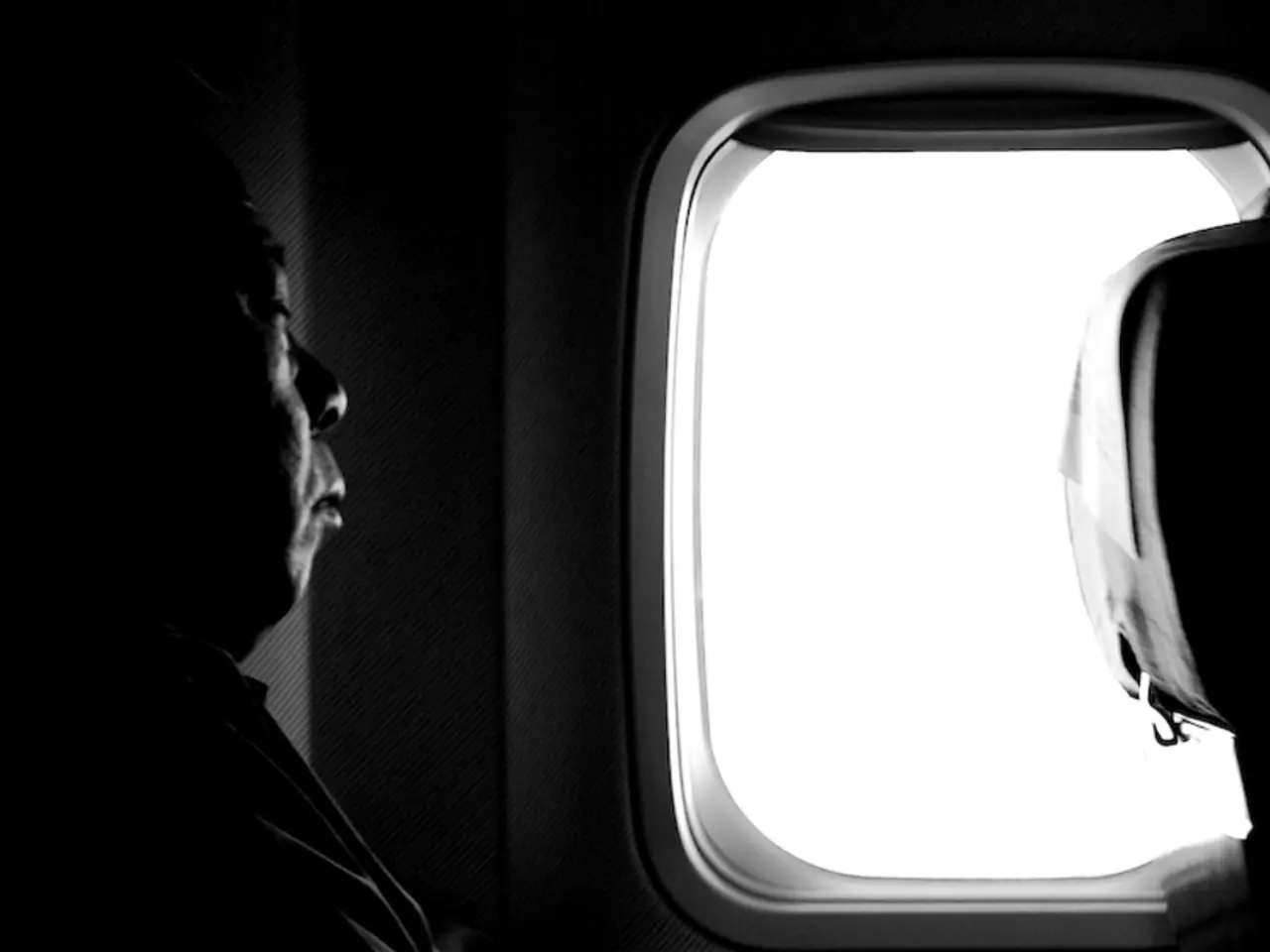"Airline Employee's Remark About Son Leaves Kazakh Woman Distraught"
In a recent incident, a mother and her 21-year-old son, who has autism spectrum disorder (ASD) and stands at 195 cm tall, encountered a challenge while attempting to secure an emergency exit seat on a flight. The mother, concerned about her son's comfort and safety, has raised questions about the airline's policies and the need for clearer guidelines.
Passengers in emergency exit rows on airplanes have specific safety responsibilities and requirements. They must be physically and mentally capable of opening the emergency door and assisting others in evacuating the plane. This includes understanding and following instructions from flight attendants. The armrests in exit seats are typically fixed, ensuring no obstruction to the exit path. Passengers seated in these rows are expected to know the location of the emergency exit and how to operate it, and should be aware of the safety briefing provided by the flight attendants.
However, individuals with ASD may face unique challenges in emergency situations due to sensory sensitivities or difficulties with social interactions. They must be able to understand and follow the instructions provided by flight attendants, which can be challenging due to sensory or processing issues. The heightened sensory environment of an emergency situation (e.g., bright lights, loud noises) can be overwhelming for individuals with ASD. Preparing them in advance for such scenarios can be beneficial. It is advisable for individuals with ASD to inform the airline about their condition when booking a flight, which can help ensure that they receive appropriate support and accommodations during the flight.
The young man in question, who is also tall, frequently experiences discomfort in regular seats during flights due to his height. In the incident, staff of a known airline refused to let him sit in the chosen emergency exit seat without providing a clear explanation. The mother has asked the airline to establish clear, understandable rules to avoid such situations in the future and to train staff appropriately.
Air Astana, the airline in question, commented on the incident, stating that safety regulations governing emergency exit seating are internationally mandated in aviation. The airline's website emphasizes that passengers occupying emergency exit seats must meet aviation safety requirements, namely being in good physical shape and psychologically stable, and understanding crew instructions in English, Russian, or Kazakh.
The mother has also pointed out that the airline's website does not specify clear restrictions for people with ASD. Some commenters have criticized the mother for "manipulating" her child's diagnosis and not understanding airline rules, while others have emphasized the importance of following safety rules during flights, even if it means discomfort for some passengers.
The incident has sparked a conversation about the need for airlines to consider the unique needs of passengers with ASD and other disabilities when it comes to seating arrangements. Some commenters have suggested that the staff should have a more diplomatic and non-offensive approach when explaining the rules to passengers, while others have shared their personal experiences of sitting in emergency exit seats, finding it more comfortable despite the lack of recline and limited storage space.
In response to the incident, the mother has expressed her hope that airlines will take steps to ensure that passengers with ASD and other disabilities are able to fly comfortably and safely, with appropriate accommodations and clear, understandable rules. The incident serves as a reminder that while safety is paramount, consideration for the needs and comfort of all passengers is also crucial.
- In the specific realm of health-and-wellness, individuals with autism spectrum disorder (ASD) may face unique challenges in emergency situations due to their sensory sensitivities or difficulties with social interactions.
- To improve the flying experience for passengers with ASD, it is advisable for them to inform the airline about their condition when booking a flight, which can help ensure that they receive appropriate support and accommodations during the flight.
- The incident has sparked a broader conversation about the need for airlines to consider the unique needs of passengers with ASD and other disabilities when it comes to seating arrangements, such as emergency exit seats.
- In response to the incident, the mother's hope is that airlines will take steps to ensure that passengers with ASD and other disabilities are able to fly comfortably and safely, with appropriate accommodations and clear, understandable rules, promoting a more inclusive lifestyle in the travel industry.







